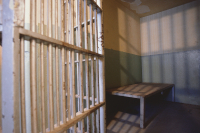Exploring Shakespeare
Shakespeare: The Biography by Peter Ackroyd. Random House, 2005. 572 pages.
Yikes! Saints and guardian angels defend us! It is yet another biography of Shakespeare! Is it possible that Peter Ackroyd, the venerable biographer of Chaucer, Blake, Dickens, T. S. Eliot and Ezra Pound, has unearthed some tantalizing and/or unknown facts about the Bard? Was Shakespeare in reality Christopher Marlowe? Francis Bacon? Thomas Kyd? Two spinster sisters with the pen name of Shakspur? Was he gay and/or a closet Catholic?
Well, dear readers, Ackroyd states with enviable confidence that Shakespeare was none of these things (except perhaps a closet Catholic, or “recusant”). After carefully sifting through thousands of church records, legal documents and diaries, the author reviews the conclusions of historians, Shakespeare’s contemporaries, other biographers and one phrenologist (no kidding). Then, after 400 pages of prevarication and several hundred paragraphs that begin with either “perhaps” or “we can possibly deduce,” Ackroyd unequivocally draws the following conclusion: The young Shakespeare was undoubtedly a genius who wrote in a kind of frenzied ecstasy. But writing was not his only vocation. He was also an extremely successful investor, moneylender and businessman. For Shakespeare, London’s theatres offered an opportunity to become wealthy. Ackroyd believes that Shakespeare intuitively knew good investments and the Elizabethan theatre had enormous potential for making money – lots of money.
Certainly, this biographer acknowledges the use of romance and sentiment in Shakespeare’s work; however, these qualities are not a part of the playwright’s character. To Ackroyd, Shakespeare is the consummate artist – remote and coolly objective. He can move an audience to laughter and tears, but he, the author, remains remote and unmoved.
He is also the consummate thief, or plagiarist if you will, often lifting entire plots and scenes from the works of his contemporaries and improving them. In Ackroyd’s opinion, the majority of Shakespeare’s works originally existed in unrefined versions – templates waiting for the master’s hand. In the case of “King Lear,” “Hamlet,” and “Julius Caesar,” a lesser talent created them all. Shakespeare clothed each of these inferior works in eloquence, gave each doomed protagonist a fatal flaw, and infused each tragedy with dramatic nobility that made it a masterpiece.
Ackroyd also debunks the traditional image of young William shivering in a garret as he feverishly composes plays and sonnets. Ackroyd’s Shakespeare quickly acquired fame and material success in London because he was blessed with an instinctive talent for surviving. He avoids controversy and quickly abandons associates who get into political trouble. He flattered the powerful and quickly became adept at using others to his advantage. (Ackroyd sees all of this self-serving behavior as admirable.) The author paints a convincing portrait of a talented opportunist who rises to prominence over a coterie of envious, protesting poets – gifted men like the doomed Thomas Kyd, Robert Greene and Christopher Marlowe. Shakespeare admired their works, and after their deaths paid his fellow playwrights the ultimate compliment by plagiarizing them.
Related Items
Ackroyd totally demolishes a host of traditional theories about Shakespeare’s family, his marriage to Anne Hathaway, and his early years in London. He presents evidence that John Shakespeare, William’s father, was not a poor farmer, but was a wealthy landowner who had once served as the Mayor of Stratford. Ackroyd finds no evidence to support the theory that Shakespeare’s marriage was unhappy. In fact, an abundance of documents (deeds, letters, etc.) suggest that the noted playwright retained close ties with his family, bought and renovated a large home in Stratford and retired there while still in his 40s.
Since Ackroyd is determined to present his subject in a historic context, parts of this biography are powerfully written and mesmerizing in their graphic detail. Especially noteworthy is Ackroyd’s description of London in 1586:
... as Shakespeare approached the city, he saw the pall of smoke. He heard it, a confused roar striated with bells. He smelled it, too. The distinct odor of London penetrated some twenty-five miles on all sides ...
Documented accounts of visitors to London during the 1500’s comment on the pervasive (and offensive) smell, noting that it seemed to be comprised of equal amounts of burning wood, sweat and sewage. The population of the city grew from 50,000 in 1520 to 200,000 in 1600. The Thames River was an open sewer and the streets teemed with beggars (14 percent of the population). Prostitutes and thieves were everywhere. The noise level was thunderous and privacy was non-existent. Fifty percent of London’s population was under 20 years old, making this a city of youth. Life expectancy was 40 years. The plague was an annual summer event, sometimes reducing the population by one-third. Large numbers of London residents fled the city each summer, including the acting companies at a dozen theatres.
Ackroyd notes that theatre was well established long before Shakespeare arrived in London. In fact, a sense of theatre dominated everything from church services to Queen Elizabeth’s court. The use of costumes, ritual and music were commonplace. Theatres such as The Rose, The Curtain, The Theatre, and The Globe were open six days out of the week, unless the plague, political unrest, and/or riots forced the government to close them. In many theatres, such events as bear-baiting and bullfights competed with drama for the public’s attention. Shakespeare didn’t invent Elizabethan theatre, but he may have perfected it.
Ackroyd stresses the fact that Shakespeare acted in numerous productions at the popular theatres (many of which seated audiences of 2,000 plus), documenting this fact by citing the letters and diaries of contemporaries. The Bard also toured with noted acting groups with colorful names, such as Lord Strange’s Men, the King’s Men, and the Admiral’s Men. However, there is evidence that Shakespeare retired in his 40s and moved back to New Place, his home in Stratford where he lived on his royalties and numerous investments. He owned stock in several theatres, including the Globe Theatre.
In general, I found this biography to be an engrossing book which draws its appeal from some of the most exhaustive research I have ever encountered. Shakespeare: The Biography is marred only by an irritating amount of repetition and Peter Ackroyd’s tendency to break into raptures of praise for his subject. Much of this excessive laudation appears to be a desperate attempt to make Shakespeare timely and cool. This includes the highly suspect portrait of Shakespeare on the book’s cover sporting a gold earring.
Finally, I am a bit disillusioned by Ackroyd’s depiction of the Bard as a gifted flatterer, opportunist and plagiarist who observed his fellowmen with the detachment of a laboratory researcher, yet created popular entertainments that are judged immortal masterpieces. Ackroyd may be right, but I’m not particularly pleased to have yet another icon debunked.









